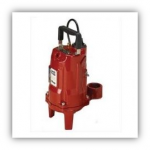Submersible Well Pumps: What You Should Know
When we talk about a pump that helps extract water from a depth more profound than the suction limit of the normal pumps, the first thing that comes to mind is submersible well pumps. These well-designed and feature-rich pumps are ideal for sourcing water from wells and supplying to the areas as required.
Submersible pumps can also be used for water draining requirements like groundwater reduction, dirt water pumping, wastewater draining, and more. Here’s a comprehensive overview of the submersible well pumps:
What is a Submersible Well Pump?
A submersible pump, as clear from the term itself, stands for a centrifugal pump that works by pushing the water to the surface. These pumps are submerged in the liquid from where the water is sourced to the users.
Submersible pump works by the simple mechanism of converting the rotary energy to kinetic energy and then eventually to the pressure energy through the diffuser blades. As these pumps are enclosed in water, you can stay assured of negligible cavitation on the pump surface.
Advantages and Applications
Submersible well pumps offer several advantages like the ones given below:
- For its lightweight and small structure, submersible pumps are easy to use.
- They are portable, which means you can easily carry them.
- For its submergence in fluid, submersible well pumps are self-priming.
- It’s energy-efficient and ensures good longevity.
- Corrosion-resistant and hermetically sealed
- Versatile and space-saving
- Safe and risk-free
- Reduced noise levels
- Requires less maintenance
Submersible pumps can be used for several areas, including residential, agriculture, and commercial industries.
Key Factors to Consider
To choose a submersible well pump, you must choose the factors that are mentioned below:
Flow rate – Flow rate is the total amount of water that can be extracted in litres per minute. The ideal flow rate for submersible pumps differs as per the purpose. A pump with a flow rate of 200 litres per minute is worth it for residential requirements.
However, you must choose pumps offering 2500 litres of water per minute for industrial use.
Well size/depth – After thoroughly analysing the overall well size and depth, you must choose a submersible pump. Do not buy pumps that are too large to fit inside the well.
Head and pressure – Make sure to interpret the total head and pressure required for your submersible pump. While the head means the height at which the water can be lifted by the pump, the pressure stands for the force exerted by the water due to gravity.
Discharge rate – Discharge rate stands for the product of the pump flow area and the flow velocity. It’s directly related to your water requirements, and it’s measured in liters/minute or hour. This means if you have a large water requirement, it’s worth choosing a pump with a higher discharge rate and vice versa.
Outlet size – You must look for the outlet size of the pipe that’s attached to the pump. Make sure it perfectly collates with the storage pipe size, so the water can be extracted/transferred smoothly.
Pump quality/construction material - Choose a sturdy, durable pump associated with a lasting warranty. It should be made with high-quality construction materials to deliver optimal performance till the end. You must also get a submersible pump that’s properly sized and easy to maintain.
Energy Efficiency and Cost Considerations
Submersible pumps are nowadays available with energy-efficient features. Besides the initial cost, installation cost, and other associated expenses, these pumps, if chosen from the right brand, can save on never-ending bills. The average cost for a submersible well pump lies between $250 and $1,200. The additional cost may lie between $250 to $2,500 for installation and pipework charges. Note that this is just a generic estimation, and the price may increase/decrease as per the pumping requirements. For example, the industrial submersible pump may require extra features, adding up its cost and installation charges.
Safety Precautions
While working with a submersible pump or installing it, people must be aware of the below safety precautions:
- Read and follow the guidelines provided by the manufacturer
- Choose a semi-dry and clean location for your pump installation
- Use protective gear and gloves while operating the pumps
- Monitor for voltage fluctuations
- Always disconnect your pump from the power source before maintenance for its seamless use.
- Enclose the pump with protective grounding to ensure safety
- Don’t restart the pumps frequently, or it may cause motor damage. Always wait for some time between two restarts.
Conclusion
Submersible pumps are worthwhile for pumping water from wells and areas deep below the ground. Not only are they known for high-end frequency, but other features like their incredible functionality, reasonable cost considerations, and low maintenance.
However, if you want to find the best submersible pumps for your requirements, consider your needs and consult a professional to guide you through the same. You can also connect with our professionals at Pump Products for your submersible pump requirements to get the best product delivered to your doorstep.













